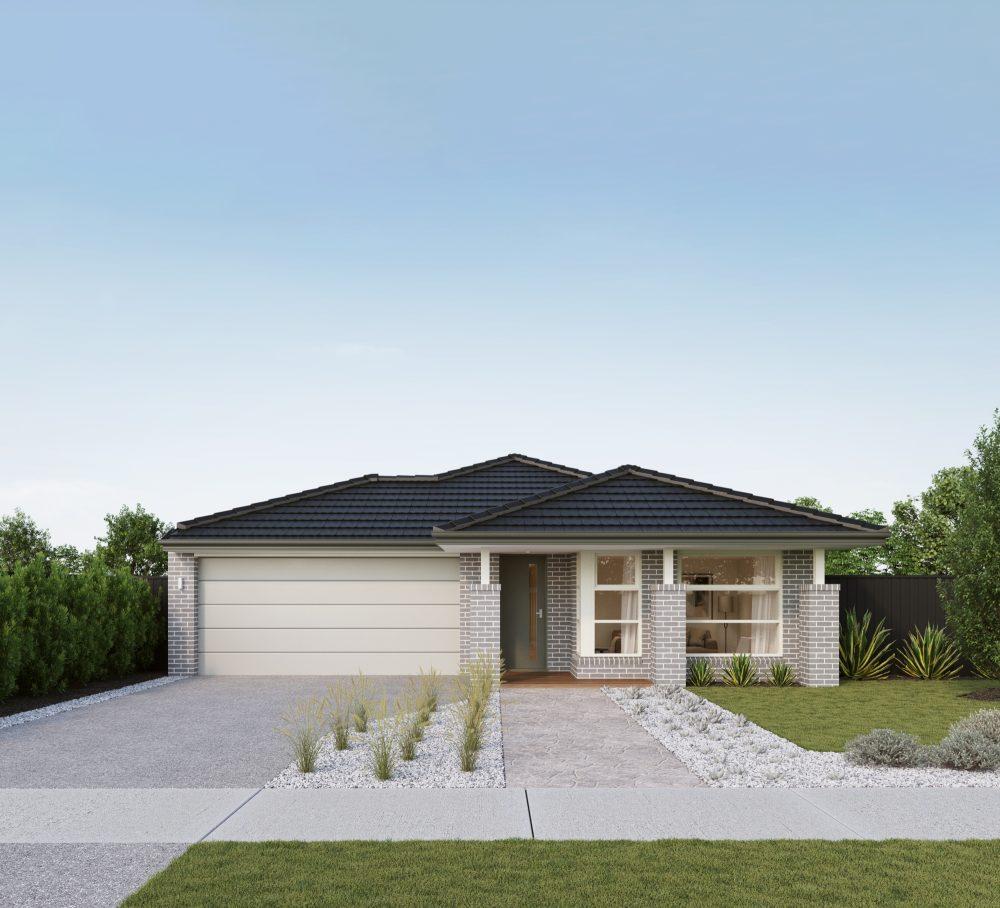Learn the Lingo - Your A-Z Glossary of Home Building Terms
Navigating the world of new home building can feel like learning a whole new language. Unfamiliar terms can leave you feeling confused, hindering your ability to make informed decisions.
We've compiled a glossary of essential terms covering construction, house design, finance, and the sales process. With this knowledge at your fingertips, you'll feel confident and prepared to embark on your home building journey!
A
Alfresco
An undercover outdoor entertaining area.
Architrave
A moulding used as a surround to a door or window opening to cover the gap between the wall and the frame.
Asset Protection
A form of insurance paid by the land owner that provides cover for any damage incurred to council assets during construction.
Authority to Commence Construction (ACC)
The official approval granted by the relevant authorities to begin the construction process.
Awning Window
Awning windows are hinged from the top and have a winding mechanism at the bottom for opening.
B
BAL Rating
Bushfire Attack Level. This indicates the construction requirements for building within bushfire-prone area.
Balance of Deposit
The remaining portion of the deposit, typically to the equivalent of 5% of the total contract value, paid by the client at a specified stage of the construction process.
Balustrade
A series of vertical members supporting a handrail of a stair or landing.
Base Stage
The initial phase of construction where the site is prepared, including excavation, leveling, and laying the foundation.
Bearer
A sub-floor structural timber member which supports the floor joists.
Building Code of Australia (BCA)
A set of national standards and regulations that govern the design and construction of buildings in Australia, ensuring safety, health, and sustainability.
Building Contract
A legally binding agreement between the builder and the client, outlining the terms and conditions of the construction project.
Building Permit
A permit issued by the local authorities that grants permission to commence construction, ensuring compliance with building codes and regulations.
Bulkhead
A feature used to cover a change in ceiling heights. Often used in kitchens to fill the space between the top of cupboards and the roof.
C
Cathedral Ceiling
A symmetrical ceiling whose two sloping sides meet at a ridge in the middle of the room. The slope of a cathedral ceiling is generally the same as the slope of the roof of the building. See also Raked Ceiling.
Certificate of Occupancy
A document issued by the local authorities after the completion of construction, certifying that the building is suitable for occupation.
Certificate of Title
A legal document that confirms ownership of a property and provides details about any encumbrances or restrictions on the property.
Construction Joint
A joint provided in a structure to allow for movement due to expansion and contraction.
Construction Loan
A construction loan is a type of home loan purposely structured for borrowers who are building their home. Unlike traditional home loans, this option offers the ability to make progress payments (progressive drawdowns) during your build.
Contour Survey
A survey conducted to determine the shape, elevation, and slope of the land, which helps in planning the construction process.
Conveyancer
A legal professional who specialises in transferring ownership of property during real estate transactions. They ensure you meet all the legal obligations involved in your property transaction and handle tasks like verifying titles, conducting property searches, preparing legal documents, and ensuring a smooth settlement between buyer and seller.
Cornice
An ornamental or decorative moulding along the junction where the wall meets the ceiling.
Crossover
Refers to where you “cross over” from the street to your lot and is where your driveway will be placed. Crossovers locations should be marked on your land’s engineering plans.
Cut and Fill
The process of excavating and removing soil from higher areas of the site (cut) and using it to fill lower areas (fill), creating a level surface for construction.
D
Design Guidelines (or Developer Guidelines)
Common in new land estates, design guidelines set out a minimum requirement for house designs, landscaping, fencing and the siting of the home on the block. They are created to ensure houses comply with the desired aesthetic of the area and will be outlined in your land contract.
Developer Approval
The approval obtained from the property developer or landowner to proceed with the construction project on their land.
Door Furniture
All fittings on a door, except the hinges.
Driveway Gradient
The gradient of the driveway between the garage floor and the front boundary. The maximum gradient is governed by planning standards to ensure suitable vehicular access.
E
Easement
A portion of your land sectioned off for use by service companies providing water, gas and electricity. These areas may be owned by the homeowner, but the utility company has the legal right to enter the area as necessary to repair or service the lines. Easements can restrict how you can use the land around them. For example, you’re not necessarily allowed to build over or near an easement.
Eaves
The lower part of a roof projecting beyond the face of a wall.
Elevation
A two-dimensional drawing, illustrated from a vertical plane, looking straight on to a building facade or interior surface. This is as if you are directly in front of a building, looking straight at it.
F
Facade
The principal front of a house that faces onto a street or open space.
Fall
The amount of slope on a block.
Fascia
The board that runs along the edge of the roof at the eaves. Guttering is usually attached to the fascia.
Fill
The amount of additional soil needed to level out a block.
Finance Approval
Formal finance approval (also known as Unconditional Approval), is when all conditions set by the lender have been met and the loan is considered fully approved.
Finance Pre-approval
Finance pre-approval means that a lender has agreed, in principle, to lend you an amount of money towards the purchase of your home but hasn't proceeded to a full or final approval. It allows you to know your maximum available funds so you can determine your budget with confidence. While pre-approval means that you're more likely to have a loan approved, it doesn't provide an iron-clad guarantee.
First Home Owner Grant (FHOG)
A government initiative designed to help first home owners enter the housing market.
Fixing Stage
The stage where internal fixtures and fittings, such as plumbing, electrical wiring, cabinetry, and tiling, are installed.
Fixtures
The items added to properties under construction that cannot be removed without damaging the property.
Flashing
Galvanised steel or other impervious material used in parts of a building to prevent penetration of moisture where diffent components meet.
Floorplan
A floorplan is a detailed drawing that illustrates the layout and spatial arrangement of a home. It depicts walls, doors, windows and fixed elements like stairs and cabinetry. Floor plans help visualize the flow of a home, room sizes, and potential furniture placement.
Footing
The part of a construction designed to transfer loads to the supporting foundation, usually constructed of reinforced concrete to support base brickwork.
Foundation
The ground or surface a building is built on.
Frame Stage
The stage where the structural framework of the building is constructed, including walls, floors, and roof.
G
Gable
The part of a wall that encloses the end of a pitched roof showing triangular open ended roof edges.
H
House and Land Package
This is where a home builder selects a home design to match a specific block of land and bundles it in one package deal. You could even get a choice of several home designs on the land, to choose the one best suited to your needs and lifestyle. View House & Land Packages.
I
Initial Deposit
The initial payment made by the client to secure the base price and initiate the construction preparation process.
J
Joist (Ceiling)
Supportive timbers that span between walls or other supports, which ceiling battens or the ceiling itself can be attached to.
Joist (Floor)
Supportive timbers that the floor is fixed to.
L
Land Loan
A land loan (or a vacant land loan) is a home loan where borrowers will seek financing from a lender to purchase a block of land. The intent with seeking a land loan is to eventually build a house on the block of land.
Lock-up Stage
The stage where external walls, windows, doors, and roofing are installed, securing the building from unauthorised access.
M
Mortgage broker
A financial professional who represents lenders and helps home buyers find the best home loan for their situation.
P
Pier Foundation
Piers are created by filling drilled holes in the ground with concrete reinforced with steel, to support other structural members.
Pitch
The slope of the roof.
Progress Payments
Payments made at various stages of construction, typically after certain milestones are achieved.
R
Raked Ceiling
A slanted, or angled, ceiling that slopes upwards. A single rake features the highest point on one side, creating an angled roofline. A double rake resembles a tent shape with two opposing slopes meeting at a central peak.
Raked Joint
A brick joint raked out by the bricklayer for a key for plaster or as a decorative finish.
Reactive Soils
Soils generally containing clay, that are subject to varying degrees of swelling and shrinkage due to changes in moisture content.
Render
A mixture of cement and mortar used to cover a wall surface.
Retaining Wall
A structure used to retain soil mass when different levels occur on site.
Ridge
The highest edge of a roof, usually horizontal.
Riser (Stairs)
The vertical face of a step in a flight of stairs.
Rough In
The preliminary stage of installation of services such as plumbing or electrical wiring.
S
Selection Studio
A selection studio is a specialised space where home buyers can personalise their new home. It offers a curated selection of finishes, fixtures, and upgrades – from flooring and cabinetry to appliances and lighting. Visit Gallerie Selection Studio.
Setback
How far from the front boundary a property can be built.
Site Coverage
The maximum area of a lot that can be occupied by a building.
Site Cut
Site cuts level the land, so your home can be constructed on a stable flat or stepped surface.
Siting or Site Plan
A drawing of your home located on your block, taking into account requirements such as boundaries and set-backs.
Slab
Concrete that has been formed up and poured.
Small Lot Housing Code (SLHC)
Applies to lots that are less than 300m2. The code was introduced to remove the need for a planning permit for smaller lots and sets out house design and siting standards, including requirements for setbacks, building height, car parking, private open space, overlooking, over shadowing and building articulation.
Soil Classification
Soil classification is an engineering report that tells us what type of soil you have in your land. This allows the engineer to identify the most suitable footing system for your soil type.
Soil Test
A test conducted to assess the properties and characteristics of the soil on the construction site, helping determine the foundation requirements.
Stamp Duty
Stamp duty, also known as transfer duty, is a government tax that applies to all property and land purchases or transfers, calculated as a percentage of the contract value. Reductions may be available to eligible parties, such as first-home buyers.
Standard Inclusions
The list of items included in the base price of your new home. This typically encompasses items such as building materials, plumbing fixtures, appliances, floor coverings, cabinetry, and finishes. These items will vary between builders.
Stringer
The two pieces of timber between which the stairs are set.
Stud
A vertical framing member usually used to create walls.
T
Title
A certificate of title is a legal document that certifies who owns a piece of land.
Truss
Trusses are pre-fabricated, triangulated wooden structures used to support the roof.
W
Working Drawings
Building drawings/plans that are drawn to scale which serve as a guide for the construction of your home. They are one part of your overall contract documentation and are used to gain all appropriate approvals.






